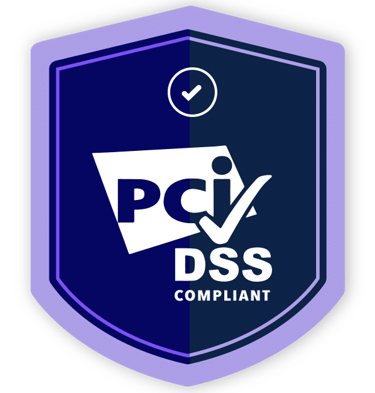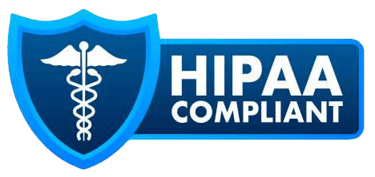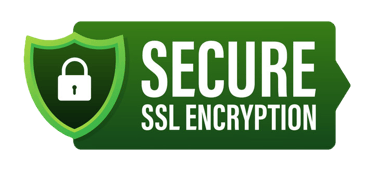Common Hospice Survey Citations and How to Prevent Them
Tailored for home-health and hospice agencies seeking to strengthen compliance with Medicare’s Conditions of Participation (CoPs)
In today’s healthcare environment, hospice and home health agencies operate under heightened regulatory scrutiny. Staying compliant with the Centers for Medicare & Medicaid Services (CMS) Conditions of Participation (CoPs) is not only essential for accreditation but also for maintaining quality patient care and financial stability.
This article outlines the most common hospice survey citations, explains why they occur, and provides practical prevention strategies that align with CMS CoPs. It also highlights how proactive compliance and staff education can reduce risk, enhance quality, and prepare your agency for successful surveys.
Why Compliance Matters for Home Health and Hospice Agencies
Although hospice and home health programs fall under separate parts of the Medicare CoPs, the two share many overlapping areas — including care planning, patient rights, quality improvement, and documentation. For agencies that provide both services or coordinate between them, a strong compliance program helps ensure seamless operations and consistent patient outcomes.
A single citation can trigger extensive corrective actions, financial penalties, and reputational damage. Preventing citations requires not only having policies in place but also demonstrating consistent implementation and documentation across all disciplines.
Top Hospice Survey Citations and How to Prevent Them
1. Incomplete or Inadequate Plan of Care and IDG Documentation
Why it’s cited:
Hospices often receive citations for failing to create individualized, comprehensive plans of care or for incomplete Interdisciplinary Group (IDG) documentation. Surveyors look for evidence that each patient’s plan reflects physical, emotional, psychosocial, and spiritual needs — and that the IDG actively participates in developing and updating it.
How to prevent it:
Use standardized templates that prompt required CoP elements.
Ensure the plan includes goals, interventions, measurable outcomes, and responsible staff.
Document all IDG meetings, updates, and care changes promptly.
Reassess and revise the plan of care whenever the patient’s condition changes.
Audit charts regularly to ensure care plans are current and consistent with patient needs.
2. Patient Rights and Responsibilities
Why it’s cited:
Agencies are frequently cited for not providing or documenting the Notice of Patient Rights and Responsibilities. Surveyors expect proof that patients and families received and understood their rights, including the right to refuse treatment, file grievances, and maintain confidentiality.
How to prevent it:
Provide written and verbal explanation of rights during admission.
Use translated versions for non-English speakers and document interpreter use.
Obtain signed acknowledgment from the patient or representative.
Review policies annually and retrain staff on how to explain rights clearly.
Maintain documentation of all grievances and their resolution.
3. Initial and Comprehensive Assessments
Why it’s cited:
Incomplete or delayed initial assessments are a leading cause of survey deficiencies. Surveyors expect comprehensive evaluations that include physical, psychosocial, emotional, and spiritual domains — with reassessments whenever there’s a significant change in condition.
How to prevent it:
Complete assessments within required timeframes.
Document caregiver ability and support systems.
Define clear reassessment triggers and timelines.
Train staff to document assessments thoroughly and accurately.
Include assessment compliance in monthly audits.
4. Coordination with Nursing Facilities and Partner Agencies
Why it’s cited:
Hospices working with nursing homes, skilled nursing facilities, or home health partners often face citations for poor communication, unclear agreements, or lack of coordination. Surveyors expect written agreements that define roles and ensure continuous oversight of care.
How to prevent it:
Keep signed facility agreements updated annually.
Clearly define each provider’s role in the plan of care.
Train facility staff on hospice philosophy, documentation, and on-call procedures.
Hold regular coordination meetings and document communication.
Audit facility-based charts for documentation accuracy and follow-through.
5. QAPI (Quality Assessment and Performance Improvement) Deficiencies
Why it’s cited:
Many agencies have QAPI programs on paper but lack documentation of real, measurable improvements. Surveyors want to see data collection, analysis, corrective action, and follow-up that show continuous quality improvement.
How to prevent it:
Develop a data-driven QAPI plan that includes measurable goals such as symptom management, patient satisfaction, and readmission rates.
Review QAPI data quarterly with leadership.
Document action steps, improvements, and measurable outcomes.
Include common citation areas (e.g., care planning, documentation) in QAPI reviews.
Maintain minutes, reports, and evidence of staff participation.
6. Clinical Records and Documentation
Why it’s cited:
Incomplete or missing records, missing physician certifications, and lack of proper authentication are frequent citation causes. Surveyors also examine confidentiality and timely retrieval of records.
How to prevent it:
Use a clinical documentation checklist for each patient chart.
Verify that all required forms — including certifications, plans of care, visit notes, and aide records — are complete and signed.
Implement EHR systems that provide audit trails and secure data storage.
Retain records according to CMS and state requirements.
Conduct monthly audits to identify missing elements and correct them promptly.
7. Infection Control and Emergency Preparedness
Why it’s cited:
Agencies often overlook infection control practices and emergency preparedness — particularly in home settings. Surveyors expect a written infection control plan, staff training, and evidence that infection prevention practices are implemented.
How to prevent it:
Maintain an active infection control program and assign a trained coordinator.
Provide annual in-service training on PPE use, hand hygiene, and transmission precautions.
Include infection trends in QAPI data reviews.
Develop and test emergency preparedness plans for all home settings.
8. Volunteer Services and Personnel Qualifications
Why it’s cited:
Hospices are required to maintain trained volunteer programs and ensure that staff qualifications meet state and federal requirements. Missing volunteer documentation or expired credentials frequently trigger citations.
How to prevent it:
Keep complete volunteer files with background checks, orientation records, and competency checklists.
Track licenses and certifications for all staff.
Conduct annual performance reviews and competency validations.
Building a Culture of Compliance and Readiness
Leadership and Governance
Ensure leadership reviews QAPI results and acts on findings.
Embed compliance discussions into board and leadership meetings.
Allocate time and resources for regular internal audits and training.
Policy and Procedure Alignment
Map every policy to the applicable CoP section.
Review and update policies at least annually.
Include detailed step-by-step procedures that match daily operations.
Continuous Staff Education
Conduct new-hire and annual CoP training for all disciplines.
Reinforce documentation standards during staff meetings.
Provide mock survey simulations to prepare staff for real survey conditions.
Internal Audits and Monitoring
Schedule ongoing chart audits and document outcomes.
Use findings to guide staff retraining or policy adjustments.
Maintain evidence of corrective actions and follow-up.
Documentation Systems and Technology
Use EHR systems that align with CoP documentation standards.
Protect data integrity and confidentiality.
Ensure staff can retrieve documents quickly during a survey.
Preparing for a Successful Survey
Maintain organized binders with certifications, policies, training logs, and QAPI data.
Conduct mock surveys quarterly.
Educate staff on how to respond confidently and accurately to surveyor questions.
Review and correct deficiencies immediately following internal reviews.
The Benefits of a Proactive Compliance Program
Implementing these strategies not only prevents survey citations but also:
Improves patient and family satisfaction.
Strengthens interdisciplinary communication.
Enhances operational efficiency and reduces risk.
Builds a culture of excellence recognized by surveyors and referral partners alike.
Partner with HealthBridge for Compliance and Survey-Readiness Success
At HealthBridge, we specialize in home health and hospice consulting, compliance management, and survey preparation. Our services include:
Comprehensive survey-readiness assessments.
Documentation and policy development aligned with CMS CoPs.
Monthly chart audits and mock surveys.
QAPI program design and management.
Staff education and ongoing compliance support.
Whether your agency is preparing for an initial certification, a re-survey, or needs help strengthening documentation systems, HealthBridge provides customized solutions that ensure readiness, compliance, and operational excellence.
Contact HealthBridge today to schedule a consultation and take the next step toward survey-proof compliance and long-term success in hospice and home health care.







